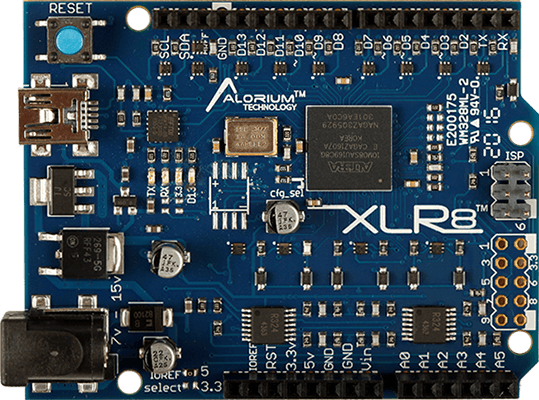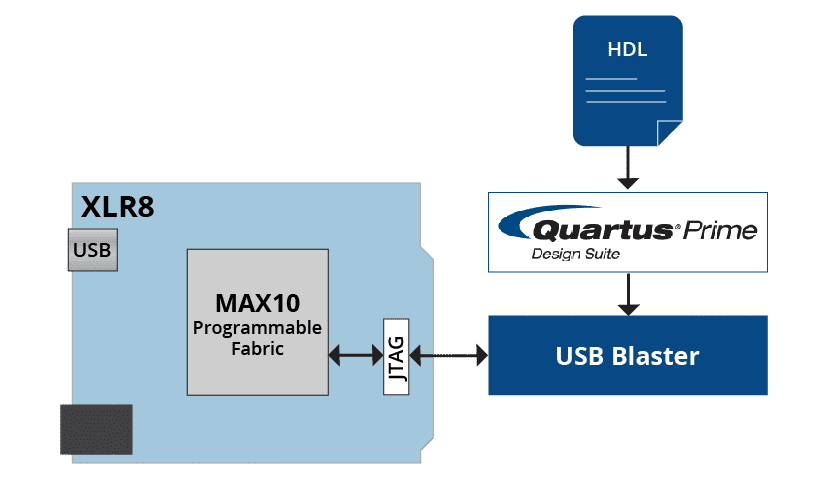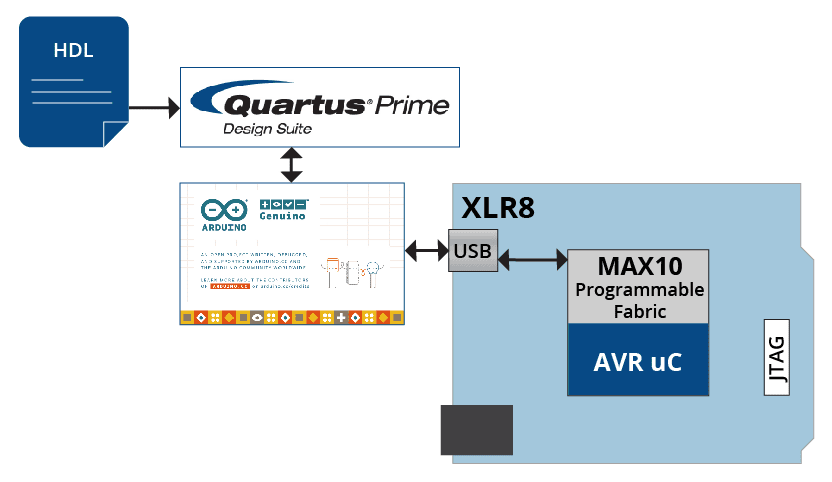
Arduino Inspired, FPGA-Based
Although XLR8 was created to bring FPGA capabilities to the Arduino ecosystem, it is also a high quality, affordable option for FPGA designers.
Advantages
- SUPPORTED by Intel Quartus Prime Lite Edition – FREE!
- PROGRAMMABLE via JTAG or USB with OpenXLR8 and Arduino IDE
- COMPATIBLE with vast ecosystem of Arduino shields and accessories
Usage Models
Bare-Metal FPGA Design
If you are looking to develop your FPGA design from scratch, XLR8 gives you a familiar board design form factor. Just add a pin header, fire-up Intel’s Quartus Prime, and use USB Blaster to load your design to the MAX10 though the JTAG port.
OpenXLR8
If you like the idea of keeping XLR8 Arduino-compatible, you can implement your FPGA logic in the form of Xcelerator Blocks and use OpenXLR8 to load them to the FPGA. This gives you the ability to program the MAX10 with your custom functionality across the USB interface on XLR8.
No JTAG and No USB Blaster required!


Xcelerator Blocks
What’s an Xcelerator Block?
An Xcelerator Block is an optimized hardware implementation of a unique processor intensive function. Since everything needs a cool acronym, we simply refer to one of these blocks as an “XB”.
XLR8 ships with pre-installed XBs that target application-specific behavior. These are listed on the right. XLR8 can be field-updated to change the XBs implemented on the FPGA. Learn more about XBs on the Xcelerator Blocks page.
XBs Pre-installed on XLR8
Enhanced Analog-to-Digital Converter
Floating Point Math
NeoPixel Control
Servo Control
Specifications
Physical Dimensions
- Based on the Arduino Uno
- Matches the Uno’s physical footprint – including pin headers for attaching shields
- Mounting brackets or shields that fit Uno will also fit XLR8
Digital I/O
- 5V Tolerant Inputs
- 5V Outputs
- 14 Digital I/O Pins
- 6 Analog Pins
Analog Inputs
- 5V
- Op-amp circuit emulates 0-5V behavior of the ADCs on the Arduino Uno
- Correct ADC results regardless of whether it’s powered from USB or from the barrel connector
- ADC Performance: 1 MHz
- Resolution: 12-bit sustained
- Sample Rate: 254k samples/second
Memory
- Program FLASH: 32 KB
- Data Memory SRAM: 2 KB
- Available SOIC-8 location for optional external EEPROM




